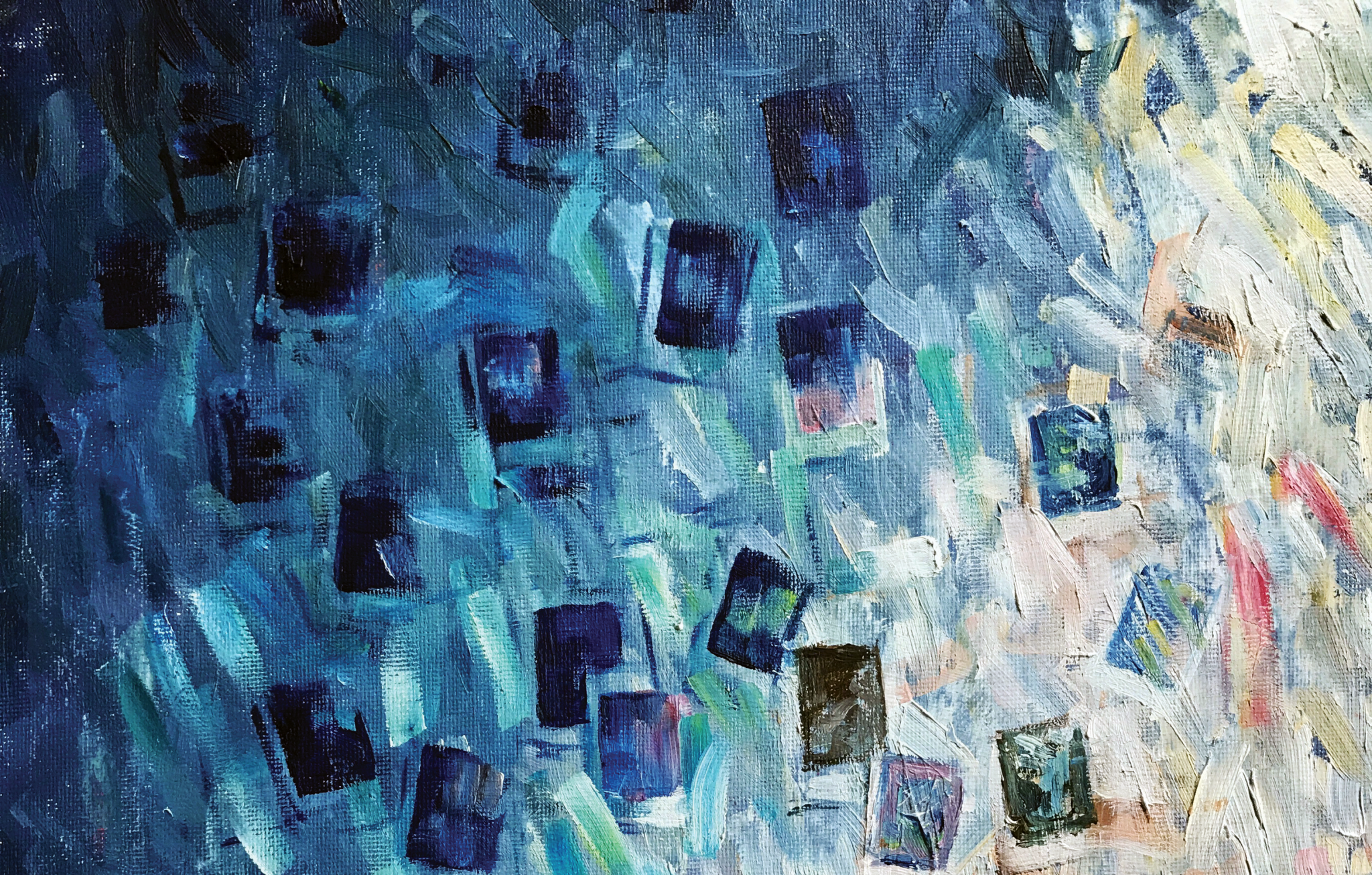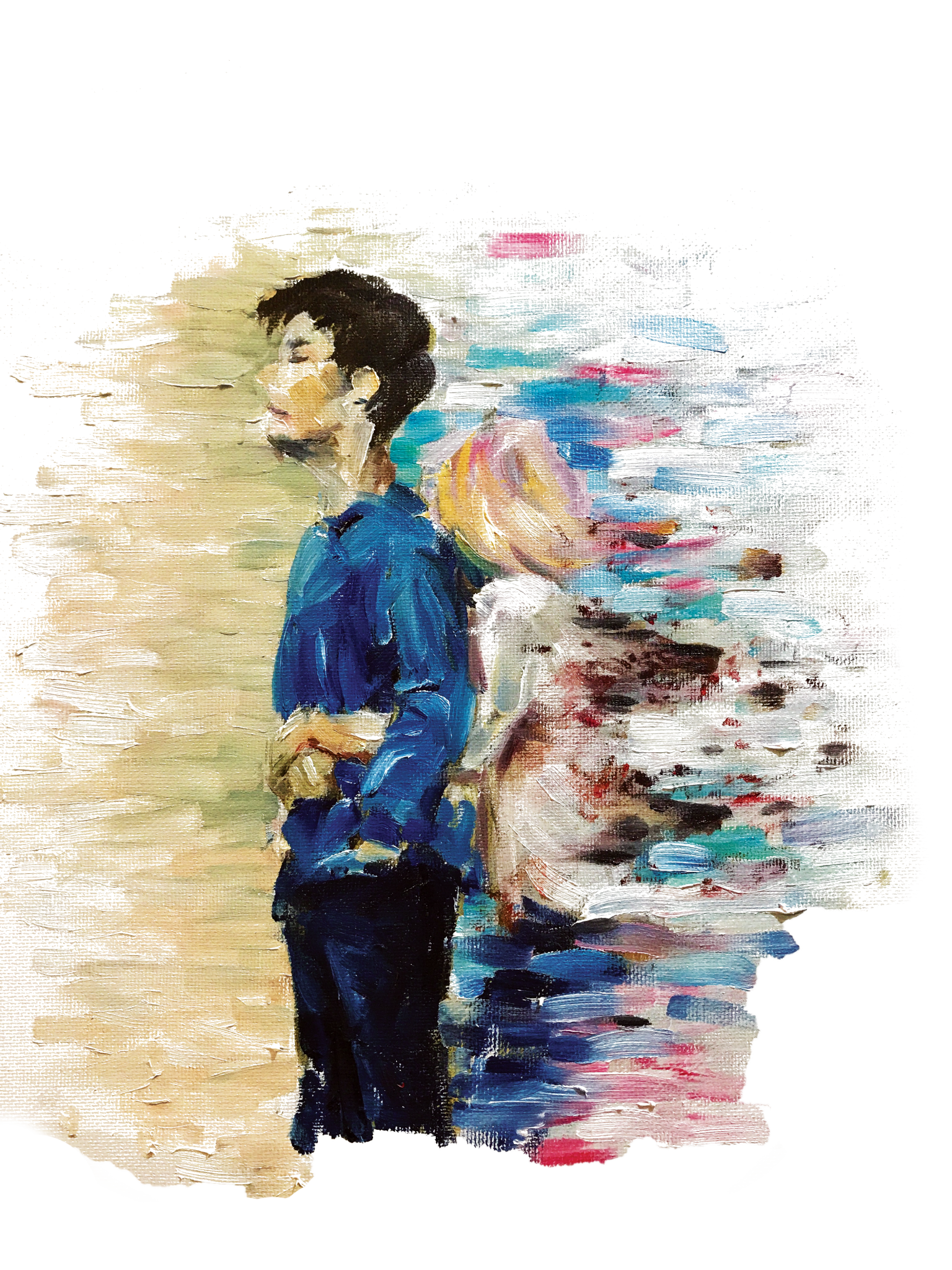The Curious Case of Hyperthymesia
When Jill Price talks about her day, she might give a full rundown of what she ate for breakfast, what commercials she saw, and what the weather was like when she went camping 23 days ago. As the conversation proceeds, she would reveal more astonishingly precise personal details: for instance, that her boyfriend ordered a prime rib during their high school senior prom. Contrary to the scant memories that an average person has, Jill’s sheer capacity to recall every minute detail about herself is simply stunning. This unique ability did not go unnoticed: Jill’s remarkable memory piqued the interest of the neurology community as well. In 2006, a team of neurologists at University of California, Irvine proved and identified Jill’s extraordinary ability as Highly Superior Autobiographical Memory (HSAM), also known as hyperthymesia [1]. With this new discovery, they wondered what sort of breakthroughs in understanding the neural substrates of memory could arise from studying her case. Through investigating similar cases, they were able to identify a genetic and structural link to the pathology of neurodegenerative diseases.

The Impossible
When the team first received word that Jill could vividly remember every day since her adolescence, they were quite skeptical. However, they did recognize the potential of studying her case. Although scientists did know that the hippocampus and medial temporal lobe are responsible for memory formation, they wondered if the brain’s autobiographical memory, which processes the world, used the same mechanism—and if Jill’s claim could be true [2][3].
To better validate Jill’s conjecture, the team began by administering the Stanford-Binet IQ test. The scientists assumed that she would have better mental faculties overall, as they concluded that all neurons in her brain were preserved. However, the results of the IQ tests that assessed her spatial, factual, and verbal memory were shocking: Jill had an IQ of 95. This means that between all ages and sexes, her mental faculties were practically the same as anyone else in the general population [2]. Next, the researchers tried short, long, and photographic memory tests and came to a similar conclusion: Jill’s ability to retain facts was the same as anyone else’s.
However, when running tests to see how far back Mrs. Price could remember major historical and personal events in her lifetime, the scientists noted that she indeed could almost perfectly recall everything: every name, meal, face, and trivial detail they asked about [1]. The team catalogued their finding as Highly Superior Autobiographical Memory (HSAM), and their paper soon sparked an area of cognitive research that was previously untouched.
After identifying Mrs. Price’s case, the team was able to reach out to similar individuals. Since then, researchers have interviewed, studied, and analyzed the cognition of 55 people. By 2012, the scientists christened HSAM with another name, hyperthymesia, a portmanteau of “hyper” and “thymesis” meaning “super memory.”
Eventually, organizations like the American Hyperthymesia Organization took steps to educate the public on this condition, but before long, the media began to exploit public interest and falsely portray individuals with hyperthymesia as geniuses. Journalists often misguide the public by mentioning that these individuals use memory tricks like chunking, mnemonic devices, and memory palaces—all methods used to create associations between pieces of information through trial-and-error—that result in their superior or extraordinary intelligence [4][5][6]. However, other research groups have determined that these tricks can be learned by anyone and that hyperthymesia is a congenital condition that has little to do with intelligence [2][6]. So, the major problem scientists have been trying to identify is the genetic and neurological mechanisms that lead to hyperthymesia, while also trying to understand the experience hyperthymesia patients live with.

An Inescapable Curse
Through public attention, interviewers and researchers have continuously hounded individuals with hyperthymesia. They often feel trapped, but even within the privacy of their heads there remains a never-ending torment of reminiscing.
In an interview with National Public Radio, Jill has remarked that living with the condition can be difficult because memories “constantly…[play] in my head, flashing forward and backward through the years relentlessly, taking me to any given moment, entirely of their own volition” [7]. She, like many other people with this condition, does not enjoy the rush of a memory playing back. Those with hyperthymesia often say that the intrusive nature of memories deters them from living in the present. Other people often comment on the raw nature of recall and how it often turned an experience like school, with the sheer volume of information given, into a miserable experience.
One particular account comes from Noma Veiseh, who has told the BBC that he remembers everything, but often memories can be “unwanted and even detrimental” to his mental well-being [8]. He relates the condition to being emotionally triggered by any and all sorts of stimuli. For him personally, he can recall every day since he “met [his] first girlfriend” [8]. Veiseh says that as a result, he has developed a habit of dwelling in the past and shying away from external stimuli to avoid feeling overwhelmed. This comment, and testimonies like it, gave scientists the idea that hyperthymesia had something to do with an increased linkage between memory formation and memories themselves [2].
Human Computing
One of the brain’s most fascinating features is its ability to modify neural connections due to neural plasticity. This susceptibility to change was the first conundrum scientists encountered when trying to understand why individuals with hyperthymesia had a nearly perfect ability to recall autobiographical information. They knew that a person learns a new piece of information and builds a memory, mostly through taking in sensory information or doing tasks numerous times to create an ensemble of neurons that fire in sequential order the next time stimuli are present [9]. During memory recall, the brain retrieves information from said neurons, and without doing so, the neurons start to weaken due to disuse [9]. The researchers could not understand why neural pruning, or the removal of unused neurons to save energy and space, was not occurring in patients with hyperthymesia [9][10].
When MRIs of hyperthymesia patients’ neural structures were compared to MRIs done on Einstein’s brain and the brains of other “geniuses”, the geniuses were found to have a greater neuron to glial cell ratio, with neurons storing the information and glial cells acting as the metabolites required to operate them [2][11]. Meanwhile, the people with hyperthymesia had a smaller than average neuron to glial cell ratio, meaning they should have a worse memory than an average person. This surprised the researchers as they originally postulated that people with hyperthymesia would have increased concentrations of grey and white matter, the neural networks responsible for better factual recall and tasks, and greater neuron to glial cell ratios like the brains of geniuses [2][11].
What researchers did discover was that people with hyperthymesia have a special prefrontal cortex [2][10]. Normally a person’s prefrontal cortex, among other functions, deals with memory formation, particularly for language and spatial reasoning when working in conjunction with the hippocampus, a region that helps create memories [12][13]. But in people with hyperthymesia, the prefrontal cortex is, along with the hippocampus, directly linked to the amygdala, the part of the brain responsible for processing emotions and creating emotional responses [3][10][12][13]. Scientists have since postulated that this structure could create a scenario where every time a memory is retrieved, the amygdala works in tandem with the hippocampus to fire clusters of neurons more efficiently, leading the brain to increase networking of autobiographical neurons at the cost of other ones [2].
With this discovery, scientists were able to conclude that replicating hyperthymesia’s neural structure might not be useful for improving cognitive function, as they had originally mused. But as they delved into the genetic aspect of the condition, they discovered that it could potentially be linked to cholinesterase production, a protein responsible for neurodegeneration in diseases like Alzheimer’s [14].

The Way of the Future
Alzheimer’s disease is primarily considered a disease for the elderly. However, that stereotype, like most, is false. Cholinesterase is a protein that breaks down acetylcholine, a neurotransmitter responsible for modulating memory, muscle movement, and motivation [14][15]. When produced in normal quantities, the enzyme helps break down acetylcholine to avoid the over-firing of neurons [14][15][16]. Alzheimer’s and other forms of dementia can only occur in individuals if cholinesterase is overproduced. Normally, this enzyme helps produce and regulate the beta amyloid proteins that ensure neurons fire and the tau proteins that deliver nutrients and supplies [14][15]. However, an overabundance of cholinesterase causes the beta amyloid to form blockages and the tau proteins to tangle, causing the neurons to stop firing and degrade [15]. The disease is spurred on by apolipoprotein E4 (APOE4), an allele of a gene responsible for regulating neural pruning and maintenance [17]. However, this mutation causes an increased likelihood of creating the aforementioned protein blockages, resulting in degeneration [17]. The pathology of the disease is grim, as the protein plaque causes the brain to slowly lose the essential connections needed for cognition and memory. Neurodegeneration can be devastating for patients and their families, as patients slowly forget who they are, and their mind prohibits them from engaging in everyday activities.
Within the past couple decades, Alzheimer’s has had many proposed treatments, including drugs that increase oxygen to stimulate brain flow and synthetic proteins used to block the beta amyloid plaque from developing in the first place [16]. However, none of these methods have proved effective in reversing the process or completely curing neurodegeneration. While people who seek these treatments prolong their lives, they will still eventually die from Alzheimer’s complications.
The discovery and analysis of hyperthymesia may prove to be the solution that clinicians have searched for endlessly. Numerous groups studying the genetics of the condition have discovered that hyperthymesia develops due to an allele known as apolipoprotein E2 (APOE2), an allele of the APOE gene that has a positive correlation with improved working memory capacity and is a counterpart to APOE4 [18]. As researchers now know how APOE2 can fight pruning, many are now considering using the gene for gene therapy, a process that changes the allele of a gene in a patient, to hopefully see positive results for those with Alzheimer’s [15][16]. If this were to work, doctors could potentially help halt or reverse the ravaging effects of the disease. While much research and many clinical trials are underway to test the feasibility of this procedure, scientists are excited and hope that this proof of concept could potentially lead to other case studies being used as a template for genetic fixes for other autosomal diseases.
A New Hope
With the positive outcomes that can arise from medical research, individuals with hyperthymesia have found a satisfaction in knowing that their condition could one day lead to the next monumental cure. They still hope that more emphasis will be placed on alleviating their own condition, but in the meantime, many of these people have taken up creative hobbies to serve as a means of therapy and a constructive outlet.
When Veiseh first gave interviews, he often lamented his inability to function as a normal human being. At the time, he found that only researchers and the media wanted to speak with him, and they were consuming his life. To escape that attention, Veiseh has since turned to professional painting. He says that he can use any “memory or phenomenon, whether it be wind blowing through a rose bush, a star exploding, a sunrise, or any number of other things” as a means to better understand his memory [19]. Veiseh says the condition has its perks and downfalls much as any other would. However, he hopes that his art can help the spur on the current research and help others understand what living with hyperthymesia is like.
One Giant Step
Hyperthymesia is a condition that is still being intensely researched, and for good reason. Not only is there good being done in helping hyperthymesia patients better understand themselves and their condition, but this research is also helping to revolutionize the way scientists could one day treat various forms of dementia. Since the initial trials began with gene therapy, scientists have not made too much headway, but they are hopeful for what future advancements could offer. Thus far, hyperthymesia has helped the scientific community investigate how the amygdala could play a role in different forms of memory formation and retention [2]. Researchers hope that hyperthymesia will yield other findings in similar conditions to help treat malfunctions with neural pruning and other memory-related diseases.
References
- Pring, J. T. (2000). Pocket Oxford Greek dictionary: Greek – English, English – Greek (7th ed.). NY, NY: Oxford University Press.
- Ally, B. A., Hussey, E. P., & Donahue, M. J. (2012). A Case of Hyperthymesia: Rethinking the role of the Amygdala in Autobiographical Memory. Psychology Press: Neurocase, 1-16.
- Dickerson, B. C., & Eichenbaum, H. (2009). The Episodic Memory System: Neurocircuitry and Disorders. Neuropsychopharmacology, 35 (1), 86-104. doi:10.1038/npp.2009.126
- Akyurek, E. G., Kappelmann, N., & Volkert, M. (2017). What You See Is What You Remember: Visual Chunking by Temporal Integration Enhances Working Memory. Journal of Cognitive Neuroscience , 29(12), 1-12. doi:10.1162/jocn_a_01175
- Nitzburg, G., Cuesta-Diaz, A., Ospina, L., Russo, M., Shanahan, M., Perez-Rodriguez, M., . . . Burdick, K. (2017). Organizational Learning Strategies and Verbal Memory Deficits in Bipolar Disorder. Journal of the International Neuropsychological Society, 23(4), 358-366. doi:10.1017/S1355617717000133
- Qureshi, A., Rizvi, F., Syed, A., Shahid, A., & Manzoor, H. (2014). The method of loci as a mnemonic device to facilitate learning in endocrinology leads to improvement in student performance as measured by assessments. Advances in Physiology Educaiton, 38(2), 140-144. doi:10.1152/advan.00092.2013
- Price, J. (2008, May 19). Blessed and Cursed by an Extraordinary Memory. Retrieved October 09, 2017, from http://www.npr.org/templates/story/story.php?storyId=90596530
- Robson, D. (2016, January 26). Future – The blessing and curse of the people who never forget. Retrieved October 09, 2017, from http://www.bbc.com/future/story/20160125-the-blessing-and-curse-of-the-people-who-never-forget
- Riccomagno, M. M., & Kolodkin, A. L. (2015). Sculpting Neural Circuits by Axon and Dendrite Pruning. Annual Review of Cell and Developmental Biology, 31 (1), 779-805. doi:10.1146/annurev-cellbio-100913-013038
- Parker, E., Cahill, L., & Mcgaugh, J. (2006). A Case of Unusual Autobiographical Remembering. Neurocase, 12(1), 35-49.
- Diamond, M. C., Scheibel, A. B., Murphy, G. M., Jr., & Harvey, T. (1985). On the brain of a scientist: Albert Einstein. Experimental Neurology, 88(1), 198-204. Doi: 10.1016/0014-4886(85)90123-2
- Aggleton, J. P., Wright, N. F., Rosene, D. L., & Saunders, R. C. (2015). Complementary Patterns of Direct Amygdala and Hippocampal Projections to the Macaque Prefrontal Cortex. Cerebral Cortex, 25 (11), 4351-4373. doi:10.1093/cercor/bhv019
- Brincat, S. L., & Miller, E. K. (2016). Prefrontal Cortex Networks Shift from External to Internal Modes during Learning. Journal of Neuroscience, 36 (37), 9739-9754. doi:10.1523/jneurosci.0274-16.2016
- Nelson, P. T., Alafuzoff, I., Bigio, E. H., Bouras, C., Braak, H., Cairns, N. J., . . . Beach, T. G. (2012, May). Correlation of Alzheimer Disease Neuropathologic Changes With Cognitive Status: A Review of the Literature. Journal of Neurophatology & Experimental Neurology, 71(5), 362-381. doi:10.1097/NEN.0b013e31825018f7
- Jun, G., Ibrahim-Verbaas, C. A., Vronskaya, M., Lambert, J., Chung, J., & Naj, A. C. (2016). A Novel Alzheimer Disease Locus Located NEar the Gene Encoding Tau Protein. Molecular Psychiatry, 21 (1), 108-117. doi:10.1038/mp.2015.23
- Gorelick, P., MD, MPH, Scuteri, A., MD, PhD, Black, S. E., MD, FRCPC, FAHA, Decarli, C., MD, Greenberg, S. M., MD, PhD, FAHA, & Iadecola, C., MD, FAHA. (2012). Vascular burden in cognitive impairment and dementia. Alzheimers & Dementia, 8 (4). doi:10.1016/j.jalz.2012.05.1957
- Lindsey, I. S., Pleydell-Pearce, C. W., & Day, N. I. (2017). Possible positive effect of the APOE ε2 allele on cognition in early to mid-adult life. Neurobiology of Learning and Memory, (17). doi:10.1016/j.nlm.2017.10.008
- Sinclair, L. I., Button, K. S., Munafò, M. R., Day, I. N., & Lewis, G. (2015). Possible Association of APOE Genotype with Working Memory in Young Adults. Plos One, 10(8). doi:10.1371/journal.pone.0135894
- Sainato, M., & Skojec, C. (2016, June 22). The Artist Who Remembers Everything (And Why We Don’t). The Observer.
